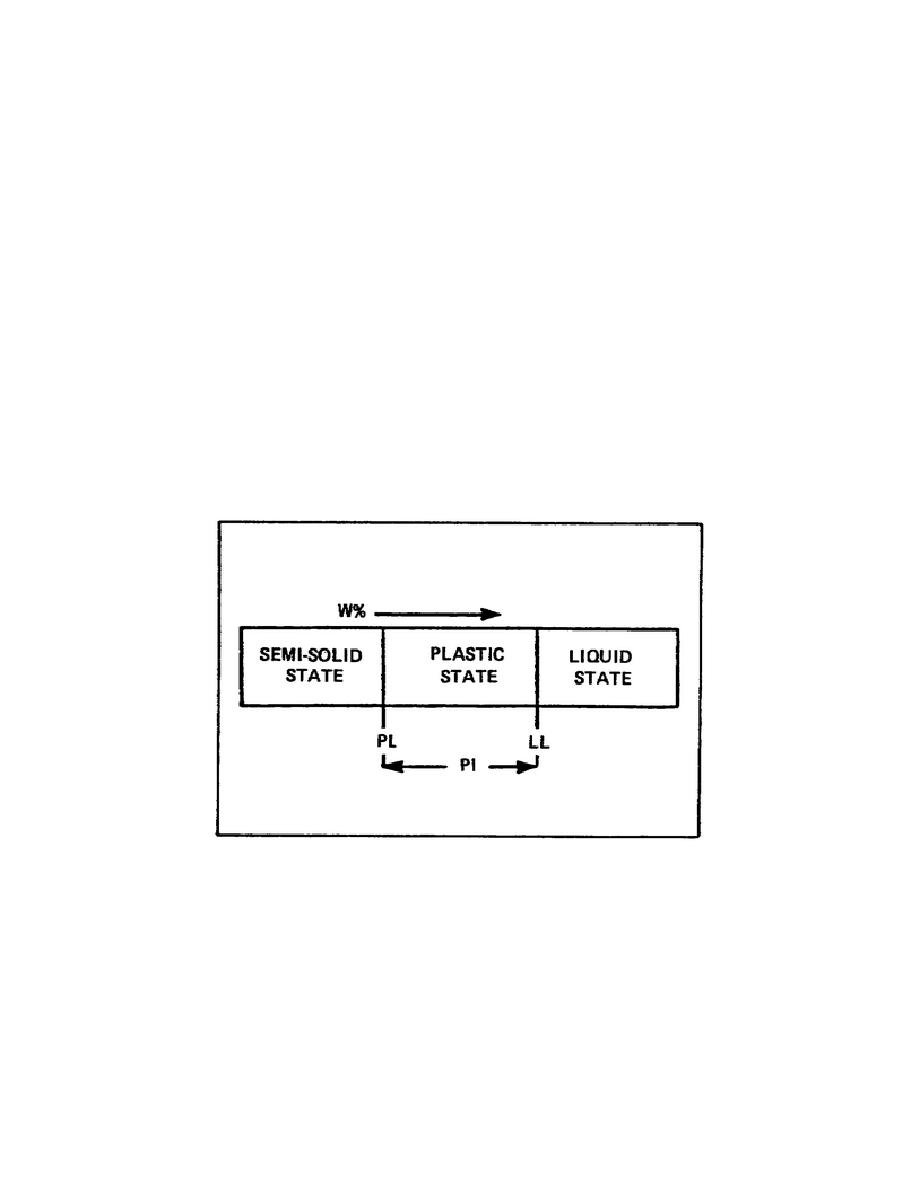
Lesson 1/Learning Event 3
Plasticity is a property of the fine-grained portion of a soil which permits it, under certain moisture
conditions, to be remolded without crumbling or rupturing. A soil or soil fraction is called plastic if, at
some water content, it can be rolled out into thin threads. Plasticity could be termed a colloidal property
since no mineral possesses plasticity unless it consists of particles of colloidal or clay size. Even then
many minerals, such as quartz powder, do not develop plasticity regardless of how small the particles
are. All clay minerals, on the other hand, are plastic. Since practically all fine-grained soils contain
some clay, most of them are plastic.
The degree of plasticity a soil possesses can be used, therefore, as a general index to its clay content.
Sometimes the terms "fat" and "lean" are used to describe the amount of plasticity, a "lean" clay being
one that is only slightly plastic because it contains a large proportion of silt or fine sand. In engineering
practice the plasticity of a soil is determined by measuring the different states a plastic soil undergoes
with changing moisture conditions.
A fine-grained soil can exist in any of several different consistency states depending upon the amount of
water which is present in the soil.
Simplifying this statement with the following diagram (Figure 9), let's see what we are talking about:
FIGURE 9. SOIL PLASTICITY
Semi-solid State: Material will crumble under a deforming pressure or load.
Plastic State: When a deforming pressure is applied, the material will deform and remain in that
deformed state when applied pressure is released.
Liquid State: Material will be wet enough to flow under its own weight. The moisture contents at the
transition zones between these states are used to classify fine-grained soils.
15


 Previous Page
Previous Page
